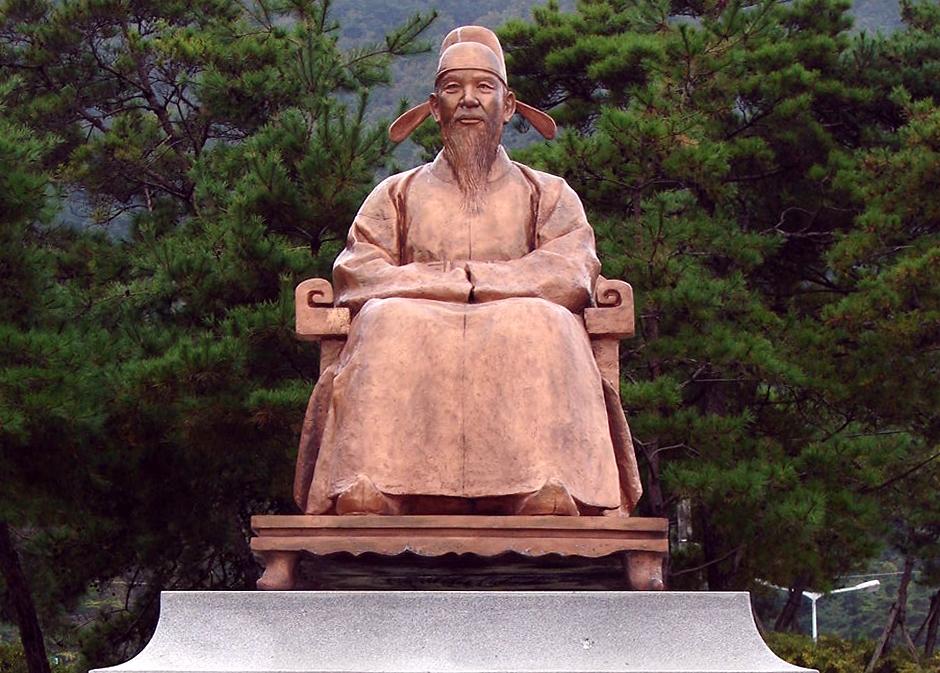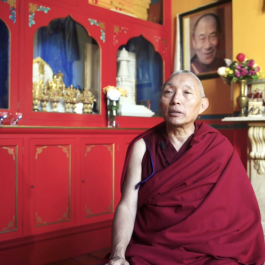
“In their treatment of other living beings, whether the beings are fierce animals like leopards and tigers or insignificant bugs like mosquitoes and flies, [Buddhists] shamelessly desire to feed them with their own bodies. . . . But in the case of someone extremely close, like one’s father or son or someone to whom great respect is due, such as the prince or minister, they unfailingly seek to sever the relationship and run away. What is the meaning of this!?” – Chŏng Tojŏn, An Array of Critiques of Buddhism (Pulssi chappyŏn) – 8. “Critique of the Buddhist Notion of Compassion,” p. 66
Such was the fierce rhetorical salvo launched by the first prime minister of Joseon Korea, Chŏng Tojŏn (1342–98; pen name Sambong), against Buddhism. He was a member of an intellectual class that had grown determined to overthrow a decaying Goryeo dynasty (918–1392), which was being propped up by a corrupt, slave-trading Buddhist establishment. This was the politically charged backdrop against which one of the greatest showdowns of East Asian philosophy unfolded, resulting in the downfall of the Goryeo house and the founding of the Joseon dynasty (1392–1897). The latter was famously supported by Neo-Confucian advisers and bureaucrats, and relegated the once politically influential Buddhists to the mountains and countryside.
Yet while this “great debate” might have taken place in a context of political upheaval and ecclesiastic intrigue, its aftermath was somewhat tame. During Joseon rule, Korean Buddhism adopted the generous hermeneutic of the “unity of the three teachings” for both philosophical and pragmatic reasons, stressing itself to be an “essential” teaching, Confucianism to be a “functional” counterpart, and Daoism to be somewhere in between. This is still the predominant view in Korea today. The story of this relatively amicable outcome is fascinating, especially since the history of competing religious traditions is typically one of bloodshed, conquest, and suppression rather than competitive but mutually enriching argumentation.
Korea’s Great Buddhist-Confucian Debate: The Treatises of Chŏng Tojŏn (Sambong) and Hamhŏ Tŭkt’ong (Kihwa) is a superlative book put together by Korean Studies scholar and translator A. Charles Muller. It presents English translations of three seminal Korean texts—two anti-Buddhist tracts by Sambong and one defense by the Buddhist monk who answered his challenge, Hamhŏ Tŭkt’ong (1376–1433; Dharma name Kihwa)—and also situates the texts within the Korean context, the broader Sinosphere, and the philosophical arena, in which Buddhism and Confucianism were oddly compatible rivals.
Buddhism and Confucianism have shaped Chinese civilization through a creative tension of philosophical affinities and disagreements since the 1st century CE. Where China went, other countries in its orbit followed, most notably Korea and Japan. The configuration of these societies as “Buddhist-Confucian” was largely due to the influence of the Chinese religious, cultural, and literary sphere. The greatest challenge to the imperial Buddhism of the Chinese Tang dynasty (618–907) was the reinvigorated medieval school of “Song learning,” songxue, that emerged at the dawn of the Song empire (960–1279). This Neo-Confucian movement would reshape Chinese society and displace Buddhism as the primary court religion.
Muller argues (although he is not the first) that the shared discourse and mutual borrowing of ideas between Buddhism and Neo-Confucianism eventually led to the aforementioned “unity of the three teachings” of Buddhism, Confucianism, and Daoism that characterized Chinese and Korean civilization, according to contemporary history books. In China, the thinking that led to this synthesis can be traced back to the 9th century with the monk Zongmi and his robust but conciliatory defense of Buddhism (p. 16), and in Korea, to the 14th century through to the present day.
Neo-Confucianism, at its most basic, revises the Confucian vision of “the relationship of humans to humans and humans to the universe, along with a much more precisely articulated path of cultivation relying heavily on the Mencius” (p. 9). However, it borrowed heavily from the ideas of “essence-function” (Ch. tiyong) and “interpenetration” (Ch. tongda) (p. 34), which appear in Mahayana sutras that became popular in East Asia (pp. 5–6). The result was a synthesis of the Chan, Huayan, and Tiantai schools with the cosmology of the more Confucian-oriented Yijing (Book of changes) and the philosophical categories of principle (Ch. li) and material force (Ch. qi). Muller provides a thorough analysis of the Neo-Confucian intellectual process in his book (pp. 28–42), unpacking a complex mutual borrowing beyond the analysis of this review.
Sambong took most of his polemical inspiration from Chinese writers, in particular Zhu Xi (1130–1200) and the brothers Cheng Hao (1032–85) and Cheng Yi (1033–1107). The Korean took particular issue with what he saw as inconsistencies and internal contradictions in the Buddhist teachings, and the two texts by Sambong that Muller has translated, On Mind, Material Force, and Principle (Simgiri p’yŏn) and An Array of Critiques of Buddhism (Pulssi chappyŏn), attack Buddhism relentlessly on the basis that it cannot withstand the scrutiny of Confucian principles. His selective focus of Chan (which was not only the most accessible school of Buddhism but seemed most susceptible to the age-old critique of Buddhism being otherworldly and uncaring of human relations and societal obligations) and subsequent characterization of Buddhism, however, is one that many Buddhists would take serious issue with.
Kihwa’s rebuttal, Exposition of Orthodoxy (Hyŏnjŏng non), the final text in Muller’s translation, takes a different approach. Muller writes: “As someone who has great respect for the Confucian teachings, Kihwa has no intention of entirely discrediting that tradition. Rather, like Zongmi, Qisong, and other Buddhist apologists before him, his aim is to point out the underlying unity of the three teachings and to reveal them as varying expressions of a mysterious unifying principle” (p. 24). Kihwa effectively uses a kind of philosophical aikido, where he accepts all the premises of his opponent but turns the force of his conclusions against their proponent. “What Kihwa will say is not that the Confucian teachings are wrong, but that they serve an important purpose. Unfortunately, however, they have been incorrectly understood and practiced by even the most important figures of their own tradition” (p. 24).
On the ethical front, Kihwa accuses Neo-Confucians of hypocrisy, in that they say one thing and do another. He argues that Confucians violate their own ethics of humaneness (Ch. ren) by endorsing animal sacrifice and hunting (pp. 92–5). He rebuts the charge that Buddhism is a “foreign” religion (a charge originally leveled by Chinese thinkers) by retorting, “There is no such thing as occupying the center and determining East and West. If we do not respect the Way of the Buddha because he is a barbarian, then shall we also not respect the ways of Shun [one of the legendary Five Emperors], who was born among the eastern tribes, and King Wen [founder of the Zhou dynasty (1046–256 BCE)], who was born among the western tribes? Can we disparage a person’s Way just on the basis of his being foreign?” (p. 104). His 16th chapter, “Refutation of the Charges of Nihilism and Antinomianism,” attempts to demonstrate that Buddhism and Confucianism are both life-affirming because they point to one truth (pp. 108–10).
Both men, in the end, attack each other’s tradition for inconsistency, but at different levels. Ironically, as the arguments unfolded over the centuries of the Joseon era, Buddhism and Neo-Confucianism found themselves adopting more ideas from the other. Muller lauds philosophical exchanges “of this type, and of this level of sophistication, between Buddhists and the thinkers of competing religious traditions.” He writes: “We intellectual historians can only wish for our own selfish edification that Chŏng had lived long enough to enter into rejoinder with Kihwa here” (p. 28). His scholarly tribute to these two men, accessible even to a layperson with a hazy idea of the differences between Buddhism and Confucianism, is the next best thing.
Korea’s Great Buddhist-Confucian Debate: The Treatises of Chŏng Tojŏn (Sambong) and Hamhŏ Tŭkt’ong (Kihwa), translated and introduced by A. Charles Muller, was published by the University of Hawai‘i Press, Honolulu, in 2015.














